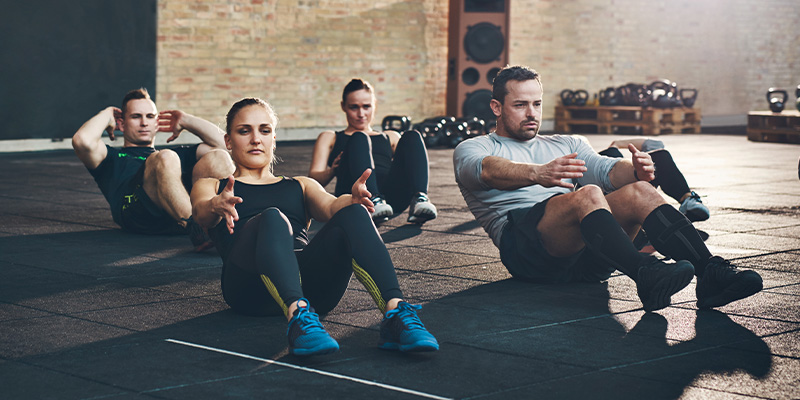
High-Intensity Interval Training (HIIT) is a versatile workout method that can be tailored to individuals of varying fitness levels. Whether you’re a beginner or an experienced athlete, adjusting the intensity and duration of each exercise is essential to ensure an effective and safe workout. In this blog post, we will explore how you can customize your HIIT workout based on your fitness level, allowing you to push yourself while still working within your limits.
1. Assessing Your Fitness Level:
Before starting a HIIT workout, it’s important to assess your current fitness level. Consider factors such as your cardiovascular endurance, strength, flexibility, and overall stamina. This self-assessment will provide a baseline understanding of your capabilities and help you set realistic goals.
2. Beginner Level:
If you’re new to HIIT or have a lower fitness level, it’s crucial to start at a manageable intensity and gradually increase the challenge. Here’s how you can adjust the intensity and duration:
– Decrease Intensity: Choose lower-impact exercises or modify movements to reduce the impact on joints. For example, replace high-impact exercises like jump squats with regular squats or modify burpees by eliminating the jump.
– Increase Rest Periods: Incorporate longer rest periods between intervals to allow for adequate recovery. This will help prevent fatigue and reduce the risk of overexertion. For instance, if you’re performing a 30-second high-intensity interval, increase the rest period to 45 seconds or even a full minute.
– Shorter Duration: Begin with shorter workout sessions, such as 15-20 minutes, and gradually increase the duration as your fitness improves. Focus on maintaining proper form and technique throughout each exercise.
3. Intermediate Level:
If you have some experience with HIIT workouts and are looking to challenge yourself further, consider the following adjustments:
– Moderate Intensity: Perform exercises at a pace that challenges you, but still allows you to maintain proper form. Incorporate higher-impact exercises and progress to more advanced variations as you gain strength and endurance.
– Balanced Rest Periods: Maintain a balance between work and rest periods. Rest for a shorter duration compared to the beginner level, allowing yourself enough time to recover without completely exhausting yourself. Aim for a 1:1 or 1:2 work-to-rest ratio, depending on your fitness level and exercise intensity.
– Longer Duration: Increase the duration of your HIIT workouts to 25-30 minutes or more, depending on your time availability and fitness goals. Gradually add more intervals or rounds to challenge yourself and improve endurance.
4. Advanced Level:
If you’re an experienced athlete or have been consistently performing HIIT workouts, consider these adjustments to continue challenging yourself:
– High Intensity: Push yourself to perform exercises at a high intensity, maximizing effort and power output. Incorporate advanced variations of exercises and incorporate explosive movements to elevate the challenge.
– Shorter Rest Periods: Reduce the rest periods between intervals to increase the overall intensity and keep your heart rate elevated. Aim for shorter rest periods, such as 10-20 seconds, to maintain a high level of intensity throughout the workout.
– Extended Duration: Increase the overall duration of your HIIT workouts to 40-45 minutes or even longer if your fitness level allows. Add more intervals, rounds, or complex combinations of exercises to challenge your strength, endurance, and mental resilience.
Customizing the intensity and duration of each exercise in your HIIT workout is essential for optimizing your fitness journey. By accurately assessing your fitness level and making appropriate adjustments, you can ensure that your workouts are challenging yet manageable. Remember to listen to your body, gradually progress, and always prioritize proper form and technique. With these adjustments, you’ll be able to achieve your fitness goals and continue progressing in your HIIT training.
